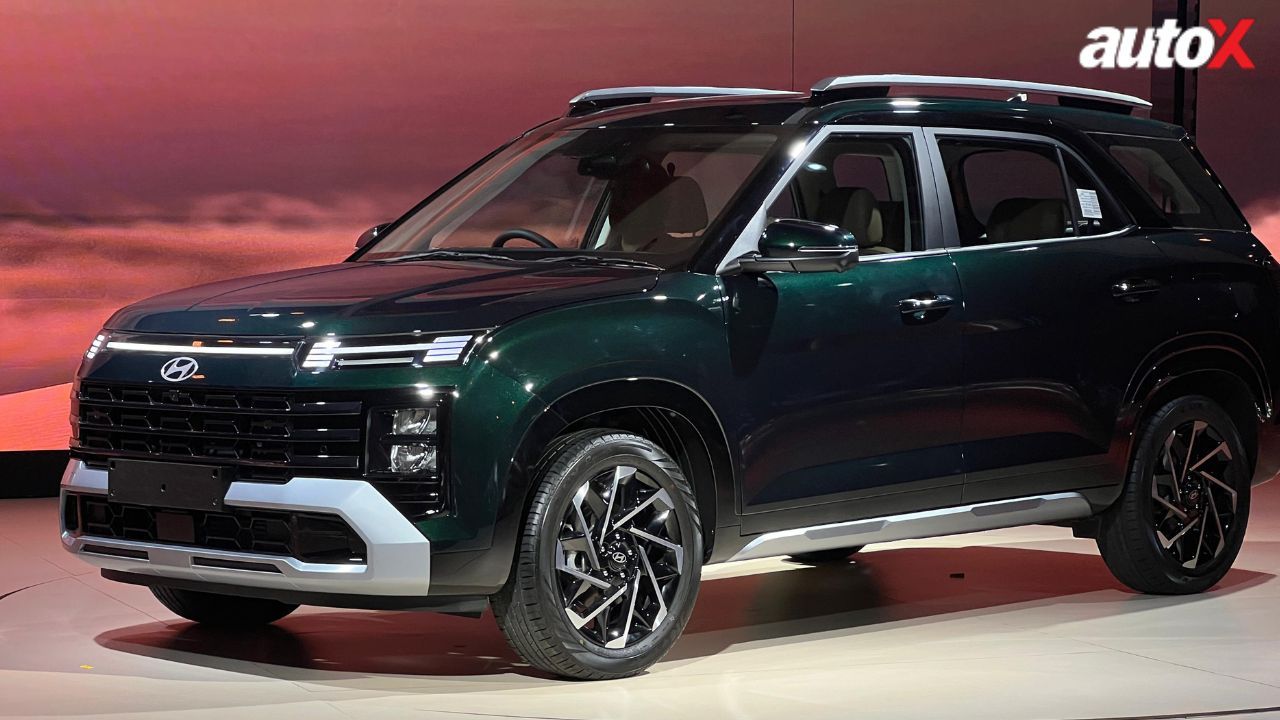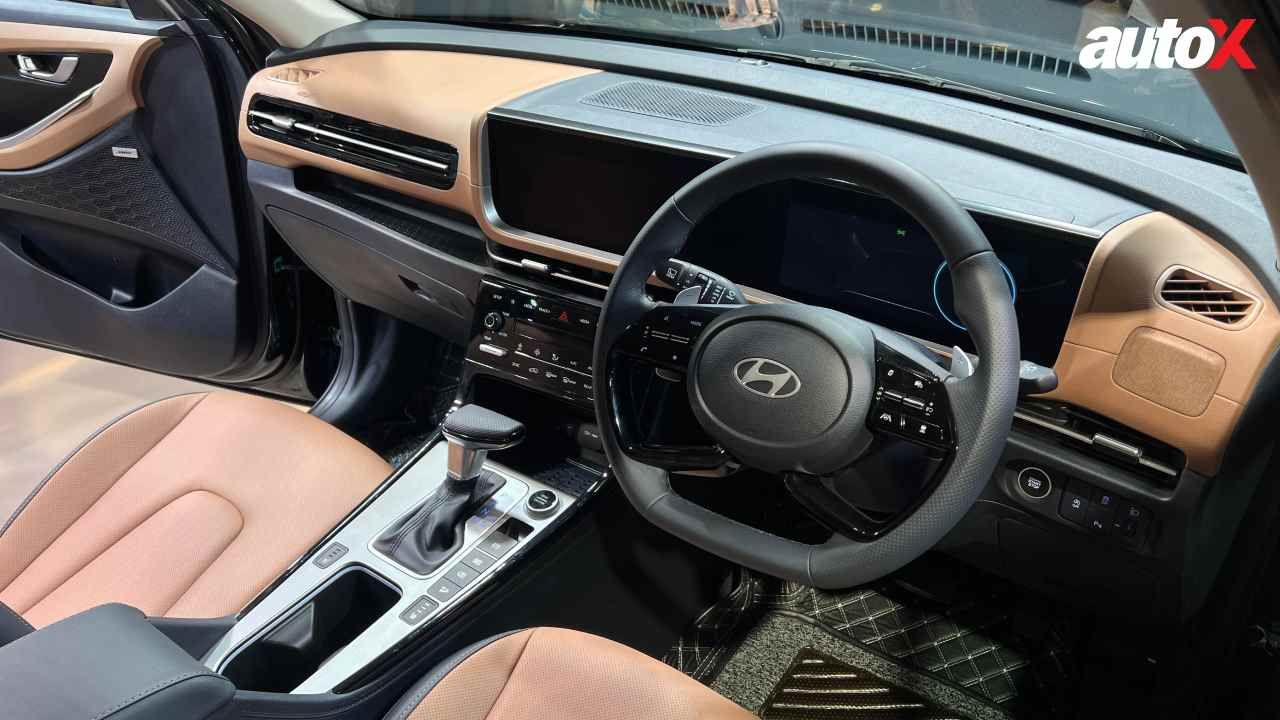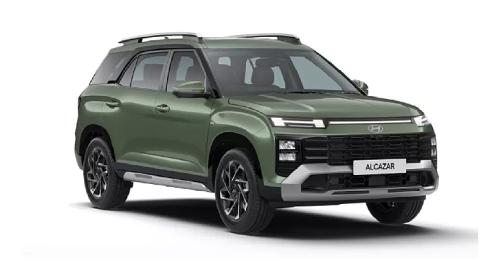Hyundai Alcazar Facelift Launched at Rs 14.99 Lakh in India; Gets Level 2 ADAS, H-shaped LED DRLs and More
Hyundai has launched the facelifted version of its popular SUV, the Alcazar, in India. With more safety features and technology integration, the updated Hyundai Alcazar aims to strengthen its position in the competitive Indian SUV market.
By Reetika Bhatt

Hyundai has launched the facelifted version of its popular SUV, the Alcazar, in India, offering a refreshed design, upgraded features, and improved performance. The new Alcazar with its more contemporary and stylish appearance, carries an ex-showroom starting price tag of Rs 14.99 lakh (for the 1.5-litre turbo-petrol variant). Meanwhile, the 1.5-litre turbo-diesel variant is priced at Rs 15.99 lakh. Coming to the variants, there are four options to choose from: Executive, Prestige, Platinum, and Signature. With this, the South Korean automaker has introduced a new entry-level Executive variant, which was not available on the previous Alcazar. It is important to note that bookings for the model are already underway for a token amount of Rs 25,000. With more safety features and technology integration, the updated Hyundai Alcazar aims to strengthen its position in the competitive Indian SUV market.
Also Read: Hyundai Alcazar Interior - Old vs New: What's Different?
Hyundai Alcazar Facelift: Design Cues
Despite having a unique design, the Alcazar facelift looks similar to its siblings, the Creta, Santa Fe, and Exter. Compared to the pre-facelift model, the front is more upright and elevated. Furthermore, the front end has a Creta-style bumper and headlights, while the H-shaped daytime running lights (DRLs) are evocative of the Santa Fe and the Exter. These are connected by an LED strip and Quad Beam LED headlamps.

Other design highlights include a flat, new grille with horizontal slats and a prominent skid plate on the revamped front bumper. The roof rails now feature a new dual-tone design. The rear end has also been modified, with new taillights and 18-inch dual-tone alloy wheels. In addition to the brand-new Robust Emerald Matte shade, the new Alcazar will be offered in nine paint jobs: Atlas White, Abyss Black Pearl, Ranger Khaki, Fiery Red, Robust Emerald Pearl, Starry Night, Titan Grey Matte, and Atlas White with Abyss Black roof.
Hyundai Alcazar Facelift: Engine and Gearbox Options
The new Alcazar continues to offer the same engine options (a 1.5-litre turbo-petrol unit and a 1.5-litre diesel engine) as the outgoing version. The turbo-petrol engine produces 157.8bhp and 253Nm of maximum torque and is paired with either a six-speed manual or a seven-speed dual-clutch automatic gearbox. The diesel engine, on the other hand, produces 114.4bhp of maximum power and 250Nm of peak torque and is available with either a six-speed MT or a six-speed AT gearbox. The three drive modes come in the form of sport, comfort, and eco. There are also three traction control modes: snow, sand, and mud.
Hyundai Alcazar Facelift: Interior and Features
The interior boasts a new dual-tone colour scheme featuring Noble Brown and Haze Navy Blue shades, similar to the Creta facelift. With a single panel housing two 10.25-inch screens – one for the touchscreen infotainment system and the other for the all-digital instrument cluster – the setup has been significantly modified from the outgoing Alcazar. The model will come in six- and seven-seat configurations.

Additional changes include a redesigned central console, a Bose sound system, updated dual-zone temperature control, USB type-A, and type-C ports, a wireless charging pad, enhanced air conditioning controls, a new "boss mode," a panoramic sunroof, a powered driver's seat with memory settings, connected car tech, a voice assistant, and ventilated second-row seats (available only in six-seater versions). The SUV also has improved padding for the captain's seats and winged headrests for the back seats. For easier third-row access, the seven-seater versions have a one-touch seat-folding option.
Also Read: Hyundai Alcazar- New vs Old: What's Different?
Hyundai Alcazar Facelift: Safety Suite
On the safety front, the redesigned Alcazar will include Level 2 ADAS (advanced driver assistance systems) such as smart cruise control, surround view monitor, blind spot view monitor, front collision warning & avoidance assist, lane keep assist, and driver attention warning. The facelifted model comes standard with six airbags, hill-start assist, electronic stability control, vehicle stability management, all four disc brakes, and a tyre pressure monitoring system (TPMS). The upcoming car will also feature a digital key, front parking sensors, rain-sensing wipers, hill descent control, and an electrochromic inside rearview mirror.



-1763700585579.webp)


